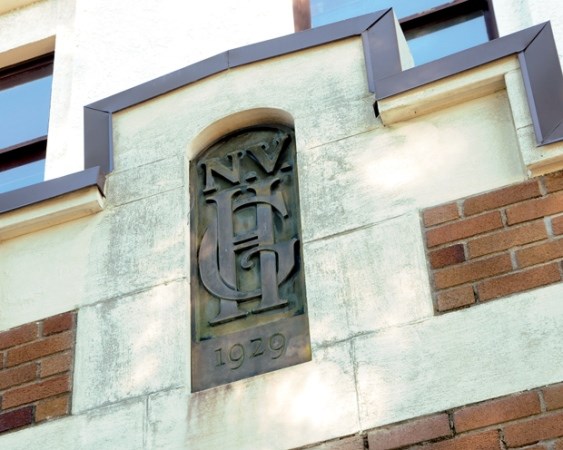The news that the 87-yearold North Vancouver General Hospital is about to be demolished has prompted me to recall my first few months as a new doctor in the summer of 1953.
At that time North Vancouver was growing and changing in the context of the post-war recovery. The street cars from the ferry at the foot of Lonsdale to Carisbrooke had just been discontinued. Lynn Valley was at the end of a mile-long road through dense green forest.
The hospital had been going for over20 years but was bursting at the seams trying to cope with a rapidly growing population. Frequently it was overloaded, with patients in beds in the corridors. Each morning the fire chief would look in and order the corridors be cleared. This was usually accomplished by tea time, but by breakfast the next morning the beds were back and occupied again. It was never clear to me how this happened, but later I realized that it relied on an efficient and co-operative group of doctors, nurses and social workers.
A prime mover at this time was Dr. Carson Graham, who ran the hospital as if he was the owner, chief of staff, medical director and CEO. Medical staff meetings were held monthly, starting promptly at noon. While we munched on our sandwiches, Dr. Graham, a ubiquitous toothpick between his teeth, would conduct the meeting, asking questions and making comments, until about 1:30 p.m. when doctors would sneak out in ones and twos on their way to their offices, and by 2 p.m. all the business was done.
Though the medical staff numbered no more than 35 we had a formal structure of divisions and departments. I forget which was the more senior group but it was clearly the reverse of the labelling at Vancouver General Hospital, which was not considered to be an appropriate model for the North Shore.
The ground floor was the site of the pediatric ward and the surgical suite while the top floor was the obstetric department (or was it “division”?). Ten years later I returned to find that where I had performed tonsillectomies and delivered babies was now the psychiatric in-patient units A1 and A4.
Besides Dr. Graham, there were other characters with interesting histories. Dr. Gendron had worked in remote parts of B.C. before coming to North Vancouver. I was fascinated by his tales of performing major kitchen table surgery virtually on his own in the north.
Dr. Dyer was nearing retirement when I started. He emigrated to North Vancouver after graduating from St. Barts in London in the late 1800s. Shortly after, the Boer War broke out and he felt obliged to return to serve his country in South Africa before once more moving back here. The story of how he became the local coroner was very old when I first heard it.
During prohibition the only way to purchase alcohol legally was by getting the authority of a doctor’s note. One day, a patient of the doctor, who was then coroner, having just picked up such a note, stumbled out of the office into traffic and was struck by a car. His rescuers saw that he was drunk and in possession of a note from the coroner/doctor, which would permit him to continue drinking. The coroner had to go. Subsequently, Dr. Dyer was offered the position of coroner of North Vancouver.
My introduction to medical practice a day after arriving was being assigned to cover a group practice over the July holiday week-end, mostly making house calls, which was the norm then. Being thrown in the deep end was exhilarating and my diagnostic skills were quickly challenged. I survived the weekend thinking I was now a doctor. On another occasion, being stuck in a deep ditch in Lynn Valley at night with no street lights had to be accepted as part of the job.
I was called one day to visit an old woman who was immobilized in a chair in her small house on the edge of the bush. She greeted me brightly in an English accent.
“The neighbours have been very kind, provided me with meals, not very well prepared, but very kind of them.”
She had suffered a major thrombosis that blocked the blood supply to her lower limbs that were now completely purple and she was dying slowly from her feet up. Indeed, after I admitted her to the hospital she lasted only a few days. Later, I heard that she and her late husband were well known as worthy citizens of North Vancouver.
Her stories of attending grand society balls as a young woman in England and her emigration to Canada suggested that she had probably taken up with the “wrong” man and had become one of the many “remittance” people who were given financial support and sent to the colonies to avoid embarrassment to their families.
I am sure there must be many other tales of interest from the old hospital, and its imminent end gives us an opportunity to record them. There are still a few of us oldsters around.
W. Gardner
What are your thoughts? Send us a letter via email by clicking here or post a comment below.



